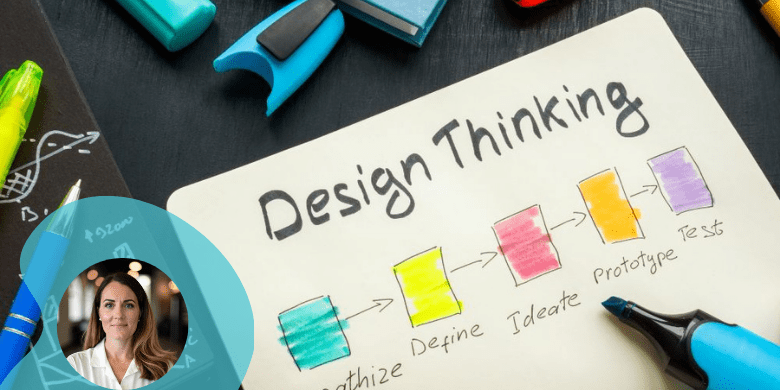In the early days of email marketing, success hinged on basic metrics: delivery rates and open rates. Fast-forward to today, and marketers face a vastly different landscape. The average professional now receives over 120 emails per day, making it imperative for brands to stand out amid the noise.
The introduction of AI in marketing has drastically changed how companies tackle this challenge. What began with simple segmentation and scheduled sending has evolved into advanced systems capable of predicting customer behavior, generating personalized content at scale, and continuously learning from engagement patterns. Yet, one crucial element remains pivotal in determining whether a well-timed email is opened and read: design.
The Intersection of AI and Human Psychology
The interplay between technology and psychology is particularly fascinating in this context. While AI is adept at deciding what to say and when to say it, the visual presentation—how that message is designed—affects engagement at a psychological level. Recent research from Bloomreach has shown that specific design elements can significantly impact open rates, click-throughs, and ultimately, revenue.
A survey conducted by Bloomreach explored the effectiveness of emojis in subject lines. The findings revealed that the gift emoji was the most effective in prompting engagement and purchases, with other strong contenders including the price tag, money bag, target, and lightning flash emojis. These choices are not arbitrary; each emoji has the power to evoke specific psychological triggers. For instance, the gift emoji is associated with value and reward, while the price tag and money bag hint at deals and savings. The target emoji signifies relevance, and the lightning flash conveys urgency—each serving as a visual cue long before the content is even opened.
Color psychology plays an equally critical role. When asked which colors would most likely engage them in shopping ads, consumers favored blue. This preference aligns with psychological principles: blue fosters trust and credibility, alleviating anxiety around purchasing decisions, which is especially vital for transactional emails.
From Guesswork to Science
The evolution of email marketing reflects the broader progression of AI in marketing. A decade ago, the industry celebrated the ability to personalize emails by inserting a recipient’s first name. Five years ago, AI-powered recommendation engines emerged, suggesting products based on browsing history. Currently, marketers utilize machine learning models that not only predict products a customer might prefer but also identify design elements that will resonate with their unique preferences and behaviors.
This level of sophistication is particularly crucial during peak shopping periods like Black Friday and Cyber Monday, when inboxes are flooded with promotional content. While personalization ensures relevance, design is the deciding factor in whether an email captures attention.
A Blueprint for High-Performance Email Design
Implementing these insights does not require expertise in psychology or data science. Analysis of successful personalized campaigns reveals several key strategies:
- Visual hierarchy is essential: In a world where attention spans are fleeting, emails must convey value immediately. Leveraging white space, varying text size and weight, and ensuring that the main call-to-action is prominent can guide recipients effectively.
- Emojis should be data-driven: Testing different emojis can yield insights—while the gift emoji works well for promotions, the sparkle emoji might be more effective for lifestyle brands, and alert symbols can enhance urgency for limited-time offers. AI can help pinpoint which emojis resonate with specific audience segments.
- Color should align with the message’s intent: Emails focused on building trust benefit from blues and purples, while urgency-driven messages can utilize warm colors like red and orange. The campaign’s objective should guide the color strategy.
- Consistency fosters recognition: Maintaining consistent brand elements such as logos, signature colors, and email structure can build familiarity, ultimately increasing open rates. AI can optimize designs within brand guidelines.
Looking ahead, the combination of AI and human creativity presents exciting opportunities for hyperpersonalized design at scale. While AI provides the necessary intelligence and reach, human psychology and creative direction will remain crucial to crafting effective email marketing strategies. The most successful marketers will recognize that every design element is not merely decorative; rather, it serves as a strategic decision rooted in behavioral science.
In the competitive landscape of today’s crowded inbox, being relevant is just the starting point. To truly stand out, resonate, and convert, brands must understand that in the split second between seeing an email notification and deciding to open it, design plays a pivotal role in differentiation.
 AI Revolutionizes Marketing: Strategies for Blending Automation and Human Creativity
AI Revolutionizes Marketing: Strategies for Blending Automation and Human Creativity Advantis Digital Marketing Launches AI-Driven Advantis Edge for $20B Sales Data Insights
Advantis Digital Marketing Launches AI-Driven Advantis Edge for $20B Sales Data Insights Twilio Reports 60% Surge in Voice AI Revenue, Achieves $120.57 Share Price
Twilio Reports 60% Surge in Voice AI Revenue, Achieves $120.57 Share Price Sabre Launches Concierge IQ™ AI Solution to Transform Airline Customer Engagement
Sabre Launches Concierge IQ™ AI Solution to Transform Airline Customer Engagement







































































